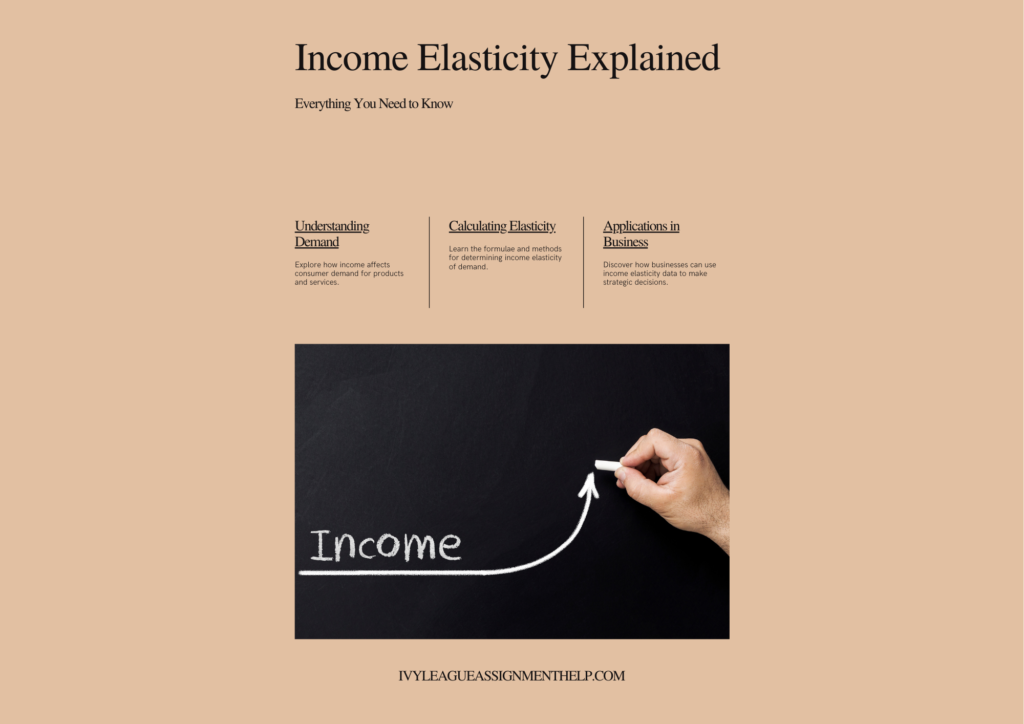In today’s competitive marketplace, businesses must understand their customers’ diverse needs and preferences. Market segmentation is a crucial strategy that enables companies to divide a broad market into smaller, more manageable segments. At ivyleagueassignmenthelp.com, we help and guide students in understanding that by identifying and targeting these segments, businesses can develop tailored marketing strategies that resonate with specific groups, leading to increased customer satisfaction and higher conversion rates.

Key Takeaways
- Market segmentation is the process of dividing a broad consumer or business market into sub-groups of consumers based on shared characteristics.
- Types of segmentation include demographic, geographic, psychographic, and behavioral segmentation.
- The benefits of market segmentation include better targeting, improved customer satisfaction, and more effective marketing strategies.
- Understanding market segmentation helps businesses allocate resources efficiently and create tailored marketing campaigns.
What is Market Segmentation?
Definition of Market Segmentation
Market segmentation is the process of dividing a broad consumer or business market into sub-groups of consumers based on shared characteristics. These segments can be based on various factors such as demographics, geography, psychographics, and behavior.
Importance of Market Segmentation
Market segmentation allows businesses to focus their marketing efforts on specific groups of consumers who are most likely to purchase their products or services. This targeted approach helps companies allocate resources more efficiently, create personalized marketing messages, and develop products that meet the unique needs of different segments.
Types of Market Segmentation
1. Demographic Segmentation
Demographic segmentation divides the market based on demographic factors such as age, gender, income, education, occupation, and family size. This type of segmentation is one of the most common methods because demographic information is easy to obtain and analyze.
- Age: Different age groups have distinct preferences and purchasing behaviors. For example, teenagers may prefer trendy fashion brands, while older adults might prioritize comfort and quality.
- Gender: Products like clothing, cosmetics, and personal care items are often targeted based on gender.
- Income: Income levels influence purchasing power and preferences. Luxury brands target high-income consumers, while budget-friendly products cater to lower-income groups.
- Education and Occupation: Education and occupation can affect consumer preferences and buying habits. Professionals might prefer premium office supplies and technology products.
2. Geographic Segmentation
Geographic segmentation involves dividing the market based on geographic factors such as region, climate, population density, and city size. This method is useful for businesses that operate in multiple locations and need to tailor their marketing strategies to different geographic areas.
- Region: Consumers’ preferences can vary significantly by region. For example, food products might be tailored to local tastes and cultural preferences.
- Climate: Products like clothing, vehicles, and home appliances may be marketed differently based on the climate of a region.
- Population Density: Urban, suburban, and rural areas have different needs and preferences. Urban consumers might prioritize convenience, while rural consumers might focus on durability and utility.
3. Psychographic Segmentation
Psychographic segmentation divides the market based on lifestyle, values, attitudes, and personality traits. This method helps businesses understand the underlying motivations and preferences of consumers.
- Lifestyle: Consumers with different lifestyles have varying needs and preferences. For example, health-conscious consumers might prefer organic and natural products, while adventure seekers might look for outdoor and sports equipment.
- Values and Attitudes: Consumers’ values and attitudes influence their purchasing decisions. Eco-conscious consumers might prioritize sustainable and environmentally-friendly products.
- Personality Traits: Personality traits like introversion, extroversion, and risk tolerance can affect consumer behavior. Brands can tailor their messaging to resonate with specific personality types.
4. Behavioral Segmentation
Behavioral segmentation focuses on consumers’ behaviors, such as purchasing habits, brand loyalty, product usage, and benefits sought. This method helps businesses identify patterns and trends in consumer behavior.
- Purchasing Habits: Analyzing how often and when consumers purchase products can help businesses develop targeted marketing strategies. For example, seasonal promotions can be tailored to consumers’ buying habits.
- Brand Loyalty: Loyal customers are valuable assets for any business. Companies can create loyalty programs and exclusive offers to retain and reward their most loyal customers.
- Product Usage: Understanding how consumers use products can help businesses improve their offerings and create targeted marketing campaigns. Heavy users might need bulk purchase options, while occasional users might prefer smaller, trial-sized products.
- Benefits Sought: Consumers look for specific benefits in products and services. By identifying these benefits, businesses can highlight the features that matter most to their target audience.
Benefits of Market Segmentation
Better Targeting
Market segmentation allows businesses to identify and target specific groups of consumers who are most likely to be interested in their products or services. This targeted approach increases the effectiveness of marketing campaigns and improves conversion rates.
Improved Customer Satisfaction
By understanding the unique needs and preferences of different segments, businesses can create products and marketing messages that resonate with specific groups. This personalized approach enhances customer satisfaction and fosters brand loyalty.
Efficient Resource Allocation
Market segmentation helps businesses allocate their resources more efficiently by focusing their efforts on the most profitable segments. This approach reduces waste and ensures that marketing budgets are used effectively.
Enhanced Competitive Advantage
Companies that effectively segment their markets can gain a competitive advantage by better meeting the needs of their target audience. This differentiation can lead to increased market share and profitability.
Types of Market Segmentation
| Segmentation Type | Basis | Examples |
|---|---|---|
| Demographic | Age, Gender, Income, Education | Targeting teens with trendy clothing |
| Geographic | Region, Climate, Population Density | Marketing winter wear in cold regions |
| Psychographic | Lifestyle, Values, Personality Traits | Promoting eco-friendly products to green consumers |
| Behavioral | Purchasing Habits, Brand Loyalty, Product Usage, Benefits Sought | Developing loyalty programs for repeat customers |
How to Implement Market Segmentation
1. Define Your Market
The first step in market segmentation is to define the broader market in which your business operates. This involves identifying the total market size, potential customers, and the overall demand for your products or services.
2. Identify Segmentation Criteria
Next, determine the criteria for segmenting your market. Choose the most relevant segmentation variables based on your business objectives, industry, and target audience. This could include demographic, geographic, psychographic, or behavioral factors.
3. Conduct Market Research
Gather data on your target audience using various research methods such as surveys, focus groups, interviews, and secondary research. This data will help you understand the characteristics and preferences of different segments.
4. Analyze and Segment the Market
Analyze the collected data to identify distinct segments within your market. Use statistical tools and software to cluster consumers with similar characteristics into segments. Each segment should be measurable, accessible, substantial, differentiable, and actionable.
5. Develop Segment Profiles
Create detailed profiles for each segment, describing their characteristics, preferences, behaviors, and needs. These profiles will guide your marketing strategies and help you tailor your messages to each segment.
6. Evaluate Segment Attractiveness
Assess the attractiveness of each segment based on factors such as market size, growth potential, competition, and alignment with your business goals. Prioritize the segments that offer the most significant opportunities for growth and profitability.
7. Select Target Segments
Choose the segments you want to target based on your evaluation. Focus on the most promising segments that align with your business objectives and have the highest potential for success.
8. Develop Targeted Marketing Strategies
Create marketing strategies tailored to each target segment. This includes developing unique value propositions, marketing messages, and promotional tactics that resonate with the specific needs and preferences of each segment.
9. Implement and Monitor
Execute your marketing strategies and monitor their performance. Track key metrics such as sales, market share, customer satisfaction, and ROI to measure the effectiveness of your segmentation efforts. Adjust your strategies as needed based on feedback and results.
Real-World Case Studies
Case Study 1: Nike’s Segmentation Strategy
Nike uses a combination of demographic, geographic, psychographic, and behavioral segmentation to target its diverse customer base. By segmenting the market based on age, gender, lifestyle, and athletic preferences, Nike creates tailored marketing campaigns for each group. For example, Nike targets young athletes with high-energy advertisements featuring popular sports figures, while promoting comfort and style to older, casual wearers. This multi-faceted approach has helped Nike maintain its market leadership and appeal to a wide range of consumers.
Case Study 2: Coca-Cola’s Geographic Segmentation
Coca-Cola employs geographic segmentation to cater to the diverse tastes and preferences of consumers worldwide. The company adjusts its marketing strategies based on regional differences in culture, climate, and consumer behavior. For instance, Coca-Cola offers different product variants and flavors in various countries to suit local preferences. In Japan, Coca-Cola introduced a green tea-flavored beverage to appeal to the local market. By understanding and responding to geographic differences, Coca-Cola effectively meets the needs of its global customer base.
Steps to Implement Market Segmentation
| Step | Description |
|---|---|
| Define Your Market | Identify the total market and potential customers |
| Identify Segmentation Criteria | Choose relevant segmentation variables |
| Conduct Market Research | Gather data on target audience |
| Analyze and Segment the Market | Identify distinct segments using statistical tools |
| Develop Segment Profiles | Create detailed profiles for each segment |
| Evaluate Segment Attractiveness | Assess market size, growth potential, competition |
| Select Target Segments | Choose segments to target based on attractiveness |
| Develop Targeted Marketing Strategies | Create tailored marketing strategies for each segment |
| Implement and Monitor | Execute strategies and monitor performance |
Frequently Asked Questions
Market segmentation is the process of dividing a broad consumer or business market into sub-groups of consumers based on shared characteristics. These segments can be based on factors such as demographics, geography, psychographics, and behavior.
Market segmentation is important because it allows businesses to focus their marketing efforts on specific groups of consumers who are most likely to purchase their products or services. This targeted approach increases the effectiveness of marketing campaigns, improves customer satisfaction, and enhances resource allocation.
The main types of market segmentation are demographic, geographic, psychographic, and behavioral segmentation. Each type focuses on different aspects of consumer characteristics and behavior.
Businesses implement market segmentation by defining their market, identifying segmentation criteria, conducting market research, analyzing and segmenting the market, developing segment profiles, evaluating segment attractiveness, selecting target segments, developing targeted marketing strategies, and implementing and monitoring their efforts.
Yes, market segmentation can be applied to both B2C (business-to-consumer) and B2B (business-to-business) markets. While the segmentation criteria may differ, the fundamental principles of dividing the market into distinct groups based on shared characteristics remain the same.
Market segmentation improves marketing strategies by allowing businesses to create tailored messages and campaigns that resonate with specific groups of consumers. This targeted approach increases the relevance and effectiveness of marketing efforts, leading to higher conversion rates and customer satisfaction.

